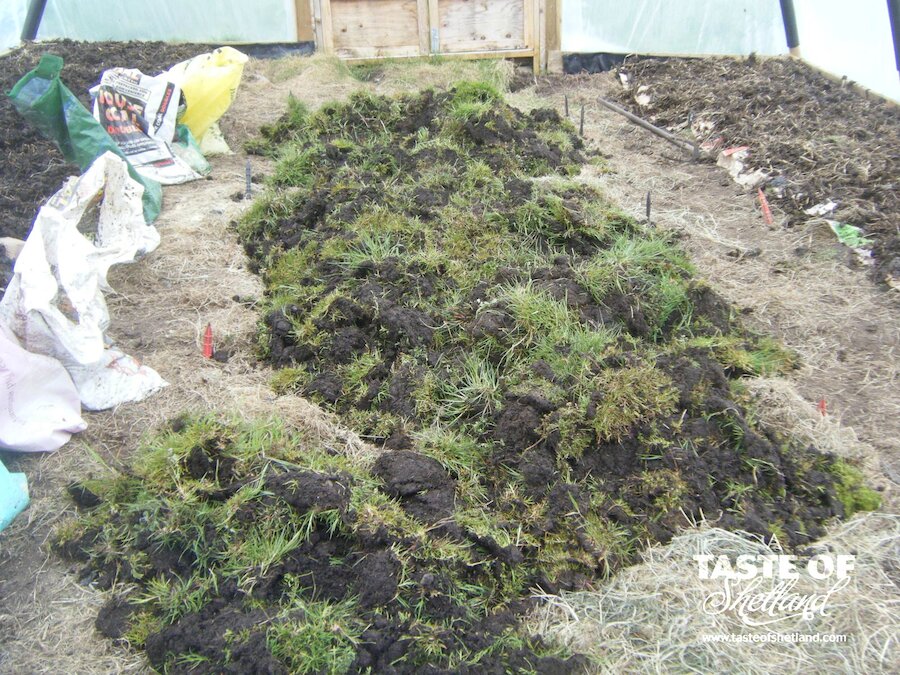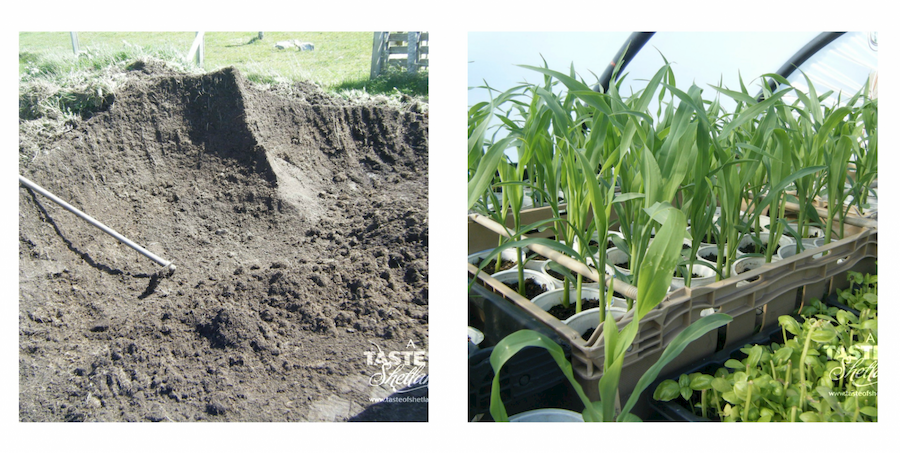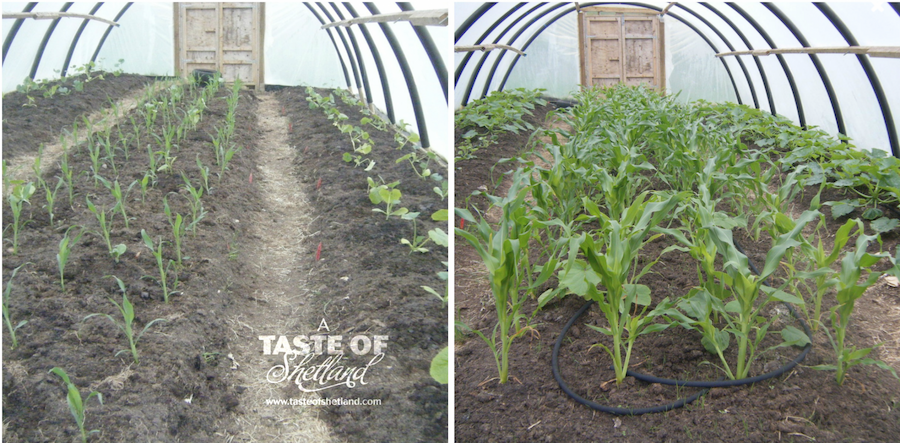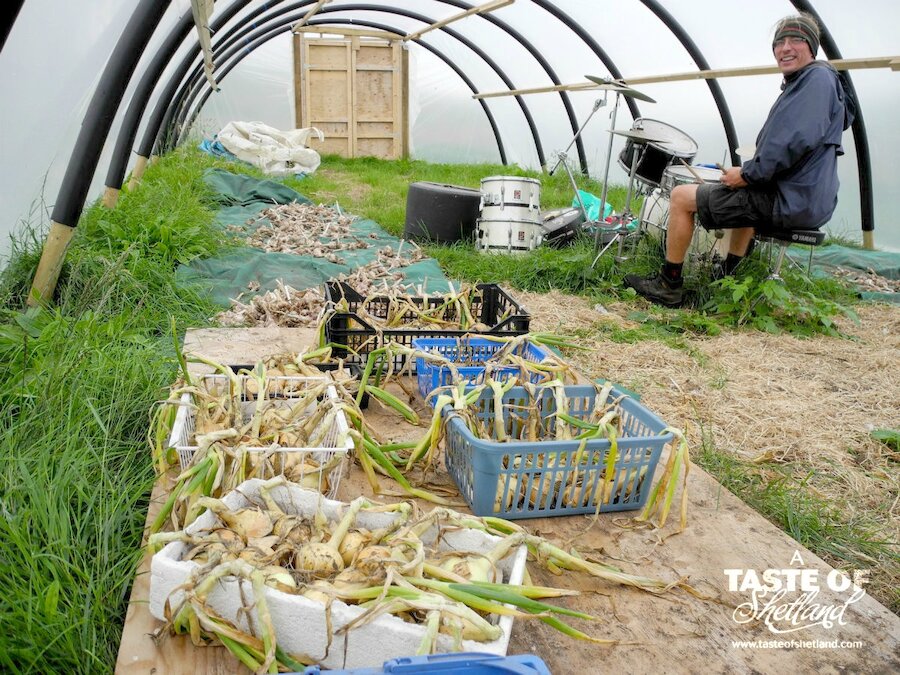Over the last few years we’ve become what could be loosely called experts in the ‘pop-up’ salmon pipe & plastic polytunnel. Bare ground to planted up in ten days. Fair enough, we do have help; our own excellent team of local volunteers, our WWOOFers and, on more than one occasion, the Moving On team. It’s all in the planning and preparation. There’s a knack to getting the pipes up and the skin on. A few hours of labour digging the trenches and making the doors. The real marvel though, is the preparation of the beds inside the tunnel.
Neither the ground nor the climate in Shetland is perfect for growing the more unusual vegetables we’ve become accustomed to buying from the supermarket. Our soil is very acidic and is either shallow and stoney or deep and wet. Clay, sand, peat or rocks and of course, the wind; constant, unpredictable and often destructive. So we use the tunnels to create better conditions for these types of plants, but what do you do about the soil? We’ve chosen to put our tunnels in the most sheltered area on the croft and this land is some of the shallowest and stoniest we have. We don’t want to use the big flat area, it might be deep and less stoney but it’s too useful for growing the crops that don’t need shelter and the tunnels would be far more exposed at the height of the winter gales. So for us, the answer is to build up the soil and fertility inside the tunnels as we go. We have 5 tunnels altogether and we have built up the soil in all except one. It started out as an experiment three years ago, after a mad middle of the night idea.








